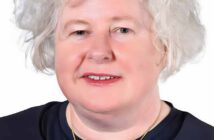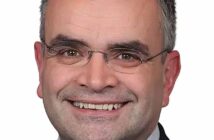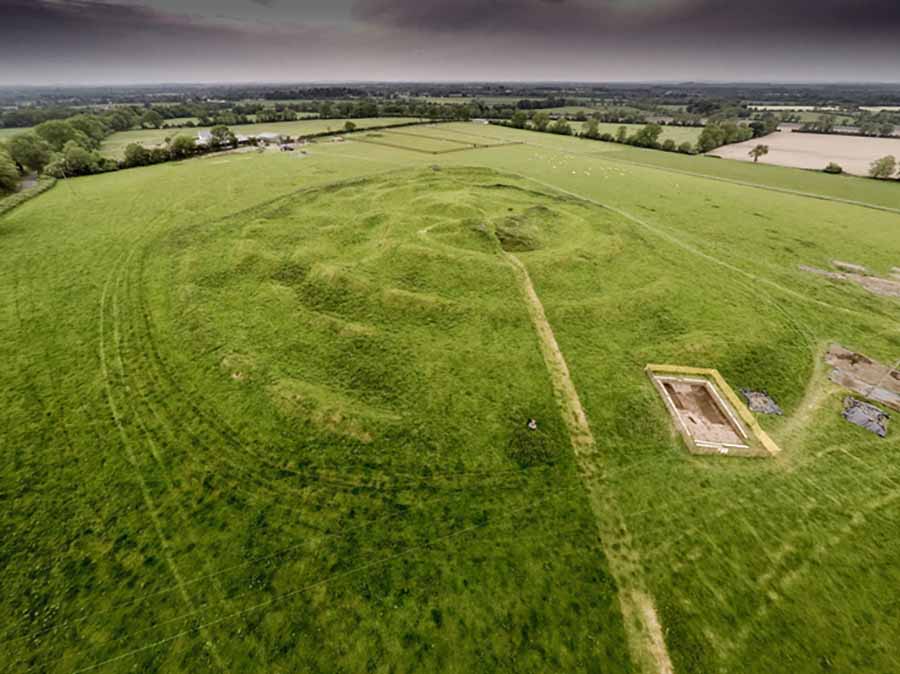
By Eoghan Corry
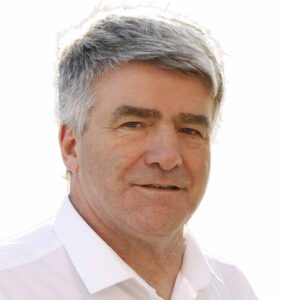
It was during a pleasant afternoon, quaffing tasteless American corporate beer with a bucksome southern belle, that I first appreciated the impact ancient Ireland has on modern Halloween.
It was a delayed flight in an American airport. I don’t remember which one, because they all look the same, an aisle with a Hudsons, a Starbucks, a Burger King, a Mac for makeup, a Dufry and a so-called Irish bar.
And there she was, long eye lashes, big hair, dyed blonde, crushed into a top two sizes too small for her, reasonably well irrigated before my arrival and telling me with great certitude how she was joining her friends for the weekend for “Sam Hain.”
Much is been done since to enhance Ireland’s ownership of the festival of the supernatural, and more importantly the commercial benefit that goes with it. Tourism Ireland first based a campaign around Ireland as “home of Halloween” in 2022. It was rolled out to boost late booking trends around the globe in the aftermath of the pandemic in nine different markets abroad celebrating the island of Ireland’s connection with Halloween.
This year’s campaign has recorded 100m views across 13 overseas markets per the four weeks of the campaign and Tourism Ireland metrics estimate an income of €60m.
The phrase”home of Haloween” was first made as a regional marketing device by the The Galleries of Justice Museum in Nottingham in 2015.
It has been central to Tourism Ireland’s marketing campaigns since, boosted by the growth in both numbers and visibility for the celebration of Samhain by new age and wiccan celebrants in North America.
But how valid is the claim?
Happy Sam-Hain
Sam Hain, as readers will recognise, is the gloriously mispronounced version of Halloween that you find nowadays on streaming services and late night satellite horror films. So mispronounced, so often, that the original is now unrecognisable to international ears.
Samhain, for readers not of an Irish heritage, is pronounced sow-an, with sow pronounced as in female pig. It is our autumn festival, our time for communication with the dead.
The elevation of Samhain to precursor of Halloween has become a cottage industry among the bloggerati of the internet. They will assure you it is when the dead wander around between dusk and dawn, so people dress up to fool them or play tricks on them. This is shared with great certitude, as there bloggerati tend to do. But, as tends to happen after dark, the tradition is not as clear cut as that.
Sadly there are no spirits roaming from dusk to dawn anywhere in the ancient records.
Not that tour guides or internet bloggerati will mind.
Happy Sam Hain.
Or as they might say in the USA, Uncle Sam Hain.
‘Samhain’: the rest of the sun
Southern Belle may be closer to the correct pronunciation than she knows. Samain could be Samh-Shuan (Sav-hooan) of Samh-Fuin, the resting period of Samh, or the sun.
Samm survives in Samh-raídhe, old Irish samrad, from the original Celtic samos, the realm or season of Samm the sun, as opposed to Gamh-raídhe, the kingdom of Gamm. Bel-tine, the beginning of summer, was also called Céidseamhin.
We can trace both the old word and the new word for sun back to the original language that spread westward from India, samm /samonios from sehwōl, and grían from grēnā (hot), although the detail of this process is often educated guesswork. Samm is also, helpfully, a Viking word for summer.
There is also support for a recent theory that Samhain is based on an ancient Indo-European word for togetherness or assembly, evident in Sanskrit samaná or old German saman.
Manuscript 3280 from the Harley Collection in the British Library quotes the divisions of the year which translate into summer and winter in modern Irish: the Samradh, from Beltine to Samfhuin, and the Geimh-redh, from Samnfhuin to Beltine.” Samh-Fuin or Samh-Shuan (Sav-hooan) translates as ‘the rest of Samh,’ or the Sun, and Gamhradh (Gavrah), the season of Gamh.
If it had a pre-Christian religious element at all, Samhain switched early from matters sacred to matters secular. While, for most recorded history it was the Christian festival of all souls, the Hallow of Hallow evening, it was also time to pay the rent.
In Lebor na Cert, the Book of Rights, Samhain was the period when food dues were paid to the overking, as the harvest had been gathered and the provisioning for the winter needed to be done.
Where food dues were collected, there was feasting. Acallamh Senórach described how, every third year, a parliament was held at Samhain, with three days of sacred rites and banqueting.
And, this being Ireland, the fairies were on the guest list.
Propaganda and plagiarism
Most of the early history of Samhain is based on one or two contemporary pieces of propaganda and a prodigious amount of plagiarism.
Everything we know about our pre-Christian Irish culture was written down so long AFTER the arrival of Christianity that it should be treated with caution.
Often some other ancient texts, assuring us what the Celts did and believed, are thrown into the mix. They are equally unreliable. The observation of Roman antagonists about Celtic culture in mainland Europe, so beloved of a previous generation of historians, are next to useless when it comes to the detail of the lived experience in pre-Christian Ireland.
In Castledermot that Cormac’s glossary, Sanas Cormaic, was written in the 800s, a gather-me-uppum of leftovers from pre-Christian times, written a long time after they had been superseded. it comes with its own political agenda designed to challenge some of the claims by Tara for hegemony over the island.
Amongst other references to pre-Christian Samhain, MS 1336, preserved in the Library of Trinity College, proposes an exact location for a Samhain festival, the Hill of Ward in Meath.
Tlachtga County Meath
Tlachtga near Athboy in county Meath, MS 1336 tells us, was where and when a great Druidic fire was lit, “from whence all the hearths in Ireland were to be lighted, the hearths of the previous year having been extinguished.”
The rest of MS 1336 gives the game away. It suggests that food dues were to be paid to the King of Munster (this, on a location only 20km from the Hill of Tara), indicating this is nothing more than a cunning plan to backdate a Viking Age tribute, allegedly due to the rulers of the southern half of the country, the House of Eoghan based at Cashel, rather than the House of Niall, based at Tara.
For the past 20 years, hundreds of people have gathered each year at the Hill of Ward to celebrate its status as home of Halloween within the home of Halloween.
There is lots of magical stuff on the internet about Tlachtga, daughter of the sun god who passed to the next world while in the act of childbirth, but the storyline perpetrated by many of the Halloween blogeratti is is from an unreliable source. It is originally found in the metrical Dindsenchas, volume iv, Book of Leinster version. The Dindsenchas is wonderful, poetic, allegorical and lyrical, but it largely nonsense designed to stylise placenames with far fetched l foundation myths.
The place name Dublin comes from Dubh Linn, the black pool where the Poddle joined the LIffey, but in the Dindsenchas it is another princess whose death is caused by a jealous rival’s enchantment of a man to assassinate her. Or Tlachta could be from “i cén lact” in old Irish, above the line (of the flat surrounding countryside), or a reference to milk, possibly a loan word from the Latin lac, lactis.
Other Samhain sunrise hills
While Samhain was established as the first of the four festivals of the Celtic year from these and other documentary sources many centuries ago, more recently we have seen the archeologists turn cup evidence of their own.
Stephen Davis of UCD excavated Tlachtga in 20-14 and found evidence of three major periods of activity, in the bronze age between 1200 and 800BC when there were some some burials,, a middle phase of 800BC to 400AD with evidence of fire and large-scale feasting, and around the time of Ireland’s conversion to Christianity 400 to 520AD. The annals also record the annual gathering there on October 31, as well as the destruction of the site by an invading army in 908 and a synod in 1168 to reform of the Irish church which attracted 13,000 horsemen who thronged the roads leading to the hill.
The winter solstice sunrise of Newgrange has become world famous since its discovery in 1967 by archaeologist Michael O’Kelly. Moon ds aligned with October 31st Samhain sunrises have since been confirmed at the Mound of the Hostages (Dumha na nGiall) at the Hill of Tara and Cairn L at Slieve na Calliagh at Loughcrew near Oldcastle. There are likely more throughout the island.
During the festival of Samhain, the sun rises in line with the direction of the chamber of Listoghil at Carrowmore above a distinctive natural ‘saddle’ feature in the Ballygawley Mountains.
Croghan hill
Offaly on the border between the ancient kingdoms of Leinsetr, Brega and Meath, is where we find the fairy connection.
The fairy hill of Croghan, Cruachán Bríg Éle, was specified by Laud 610 as the hill where a particularly beautiful maiden was hidden.
This femme fatale, quite literally in this case, that the men of Ireland attempted to woo every Samhain for many years, had an annoying habit of enticing suitors to the slaughter, killing every man to which she was not attracted.
One eventually succeeded in winning her heart and keeping his head. Manuscript Laud 610, the Boyhood Deeds of Finn, written in the 1100s, is best known today as the source of the “salmon of knowledge” wonder tale taught to schoolchildren. It says the fairy-forts of Ireland opened at this time; “for on Hallowe’en nothing could ever be hidden in the fairy-forts.”
From this comes the tradition that fairy fort Ireland acts as a portal into the otherworld, in the manner of Stephanie Meyer, for one night only. This single reference in a fragment of an incomplete manuscript was enough to send a lot of otherwise sensible people to this day in chase of the bobbing apples of Samhain’s mysterious past.
Divining the fortunes of the year to come
It is evident from our romantic and heroic literature that sundown Samhain doubled up as a time for divining the fortunes of the year to come.
The Book of the Dun Cow includes some dramatic divination at Hallowe’en by otherworld creatures, including dead horsemen giving ominous warnings. Other parts of the Ulster Cycle suggests Samhain began the new Celtic year, although recent scholarship is less convinced.
The combination of folk memory of food dues, open fairy fort portals and magical divination created the Hallowe’en we know today.
Folklorists, from O’Donovan to Ó Duilearga to Ó hOgáin, suggest that the games of our childhood, with their bobbing apples, and the threepenny bit in the barm brack, were a legacy from ancient magical attempts to predict the future.
We have no idea how any of this evolved. Although there are some disapproving references to the customs of the people, it was the 1830s before anyone turned up on the doorstep to ask the country people themselves what was happening. They found enough peculiar customs to keep six generations of folklorists busy.
Food dues to apple games
In the heroic literature, at a time the overking collected his oats, apples and nuts, supernatural creatures were expected to demand food-dues of their own.
Food-dues are important, so why should the otherworld be left out? Gorier parts of the story, that tell us that Samhain dues could include children sacrificed to the dreaded Fomorians, appear to have been added later, around 1634.
Children dressing up as the aos sí, going door to door to collect the food dues for the supernatural, was presumably less traumatising for all concerned than an appearance by the souls of the dead themselves.
Albeit only marginally, it must be said.
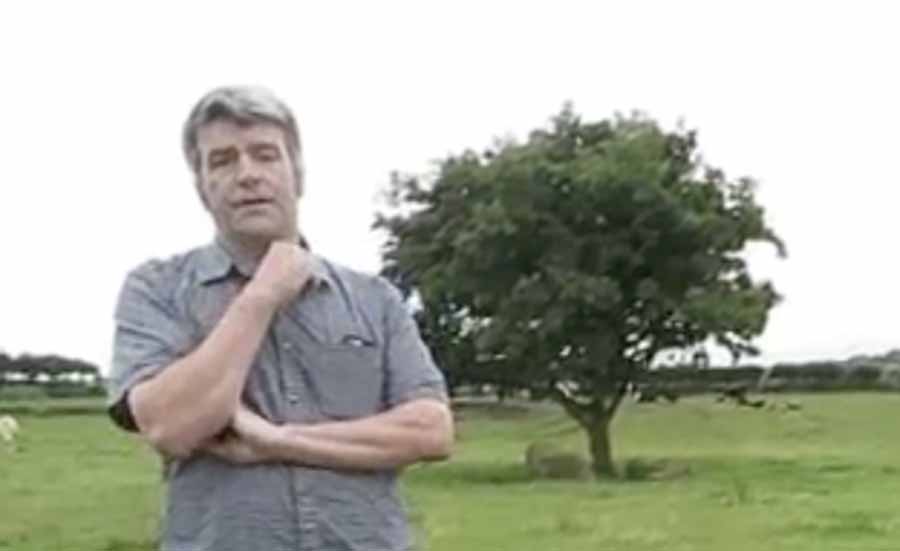
Six Halloween locations in Ireland
Samhain, Day of the Dead & All Saints Day around the world
Samhain out of the suitcase: where the festival its celebrated in the USA

